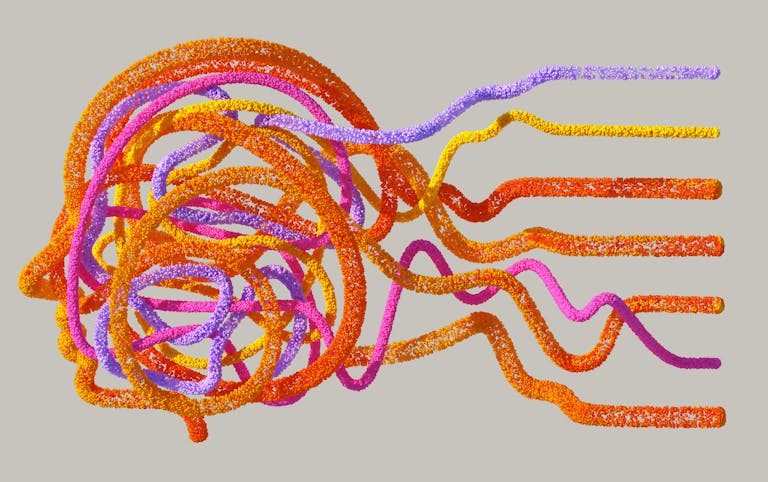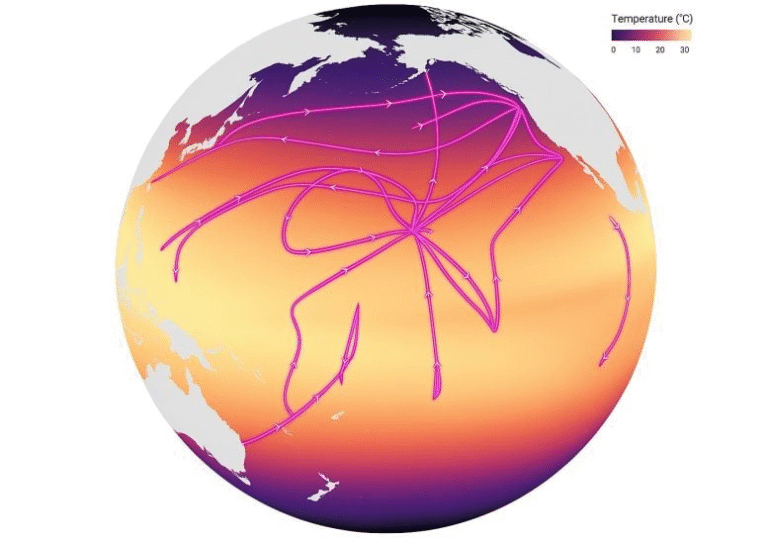Is Dark Matter Changing Over Time? A New Theory Could Solve the Universe’s Biggest Mystery

A bold new idea is stirring discussion in cosmology: what if dark matter itself evolves over time? Instead of changing the laws of gravity or tweaking dark energy, a team of cosmologists has proposed that a small fraction of dark matter might slowly transform as the Universe ages. This concept, if true, could help resolve one of the most persistent puzzles in modern physics — the Hubble tension — and offer fresh insights into how our cosmos expands.
Understanding the Hubble Tension
Let’s start with the problem this theory tries to solve. For years, astronomers have known that the Universe is expanding. But there’s a catch — different methods of measuring the expansion rate give conflicting results.
Measurements from the early Universe, particularly from the cosmic microwave background (CMB), suggest a slower rate of expansion. In contrast, observations of nearby galaxies — those measured in the more recent Universe — show a faster expansion.
This discrepancy, known as the Hubble tension, refuses to go away. Despite increasingly precise data from missions like Planck, SH0ES, and DESI, the gap between early- and late-time measurements persists.
Scientists have offered a range of explanations over the years. Some argue that Einstein’s general relativity might need adjustments. Others question whether dark energy — the mysterious force driving cosmic acceleration — could be evolving. A few even wonder if our entire understanding of time or cosmic geometry might be flawed.
Now, there’s a fresh proposal that shifts the spotlight: dark matter itself could be changing.
What Makes This Idea Different
Typically, when cosmologists talk about changes in the cosmic energy balance, they focus on dark energy. After all, dark energy makes up about 68% of the Universe and is thought to be responsible for its accelerating expansion.
But this new study, titled “Evolving Dark Energy or Evolving Dark Matter?” by Xingang Chen and Abraham Loeb, takes a different turn. The researchers explore the possibility that dark matter, not dark energy, might be the evolving component.
This is an unusual suggestion because dark matter has long been considered a static, cold, and pressureless form of matter — something that interacts gravitationally but not through light or other forces. The idea that it could change its nature over time challenges one of the key assumptions of the standard cosmological model (ΛCDM).
According to Chen and Loeb, if a small portion of dark matter gradually evolves, the observed acceleration of the Universe could be explained naturally, without modifying gravity or invoking strange forms of dark energy.
How Evolving Dark Matter Works
In this model, most dark matter stays the same — stable, cold, and non-interacting. However, a small fraction (around 15%) behaves differently. This component has a time-varying equation of state, meaning the relationship between its pressure and energy density changes as the Universe expands.
To put it simply, this type of dark matter oscillates between different states, rather than remaining constant. These oscillations could be subtle — not something we’d notice directly — but their cumulative effect might explain why cosmic expansion appears faster now than it did in the distant past.
This concept is partly inspired by what we already know about neutrinos. Neutrinos are lightweight particles that rarely interact with normal matter, and they are known to oscillate between different types (or “flavors”) as they travel. Chen and Loeb suggest that dark matter particles could exhibit a similar oscillatory behavior, with their physical properties fluctuating over cosmic time.
They propose that about 85% of the Universe’s dark matter remains standard and “cold,” while the remaining 15% evolves through these oscillations. Such a mixed model can fit existing observations, including galaxy clustering and cosmic microwave background data, while also helping to resolve the Hubble tension.
A “Toy Model” — But With Big Implications
The researchers emphasize that their proposal is a conceptual framework, not a fully developed physical model. It doesn’t pinpoint exactly what kind of particles might make up this evolving dark matter, nor does it specify the detailed mechanism behind the oscillations.
However, their approach is grounded in standard physics. They describe how a scalar field (a type of field common in particle physics) could represent this evolving dark matter component. With the right potential energy function, the scalar field’s equation of state (denoted as “w”) could oscillate between different values over time.
The mathematical form they use for this concept resembles the familiar Lagrangian for a scalar field, which is often used in theories of fundamental particles and cosmological inflation:
L = (1/2) ∂μφ ∂^μφ – V(φ)
In this case, the potential V(φ) determines how the dark matter’s energy density evolves.
Even though it’s still hypothetical, this model fits observational data surprisingly well. When compared against results from DESI (Dark Energy Spectroscopic Instrument), CMB measurements, and supernova observations, the evolving dark matter framework performs as well as or better than some competing models of evolving dark energy.
Why Not Just Stick With Evolving Dark Energy?
The idea of changing dark energy isn’t new — cosmologists have explored it for decades. However, evolving dark energy comes with serious theoretical problems.
For one thing, many models of dynamic dark energy require what’s called “phantom energy,” where the equation of state w < -1. Such models can violate the null energy condition, a cornerstone of general relativity, and often lead to unstable or unphysical predictions.
By contrast, evolving dark matter doesn’t need to break these physical laws. It can stay within the safe bounds of established physics while still producing similar observational effects.
Chen and Loeb point out that an evolving dark matter model can mimic the behavior of evolving dark energy in many cosmological tests, because both affect the overall balance of matter and energy in the Universe. The key difference is that the cause lies in the matter sector rather than the energy sector.
The Observational Angle
What makes this theory exciting is that it’s testable. As new observations come in from missions like DESI, Euclid, and CMB-S4, scientists can check for subtle deviations from standard dark matter behavior.
If even a small portion of dark matter evolves, it could leave detectable signatures in:
- The distribution of galaxies at large scales.
- The growth rate of cosmic structures over time.
- Subtle patterns in the cosmic microwave background.
The model’s prediction — that around 15% of dark matter is oscillatory — can be directly confronted with data as measurement precision improves.
Broader Context: What We Know (and Don’t Know) About Dark Matter
Before diving too deep into exotic models, it’s worth remembering how little we actually know about dark matter itself.
Despite decades of research, no one has ever directly detected a dark matter particle. We only infer its presence through its gravitational effects — from the way galaxies rotate to how galaxy clusters bend light through gravitational lensing.
Current leading candidates include WIMPs (Weakly Interacting Massive Particles), axions, and sterile neutrinos. All are hypothetical particles that would interact weakly with ordinary matter.
If evolving dark matter turns out to be real, it might point to a new class of particles or fields beyond these familiar candidates. Perhaps dark matter has multiple components — some stable and cold, others dynamic and evolving.
This kind of multi-component dark matter model isn’t unprecedented. In fact, it would bring cosmology closer to the structure we see in normal matter, where protons, neutrons, and electrons all behave differently yet form a coherent system.
Potential Challenges
Every new idea in cosmology faces scrutiny, and evolving dark matter is no exception.
- Model Degeneracy – Observationally, evolving dark matter can look a lot like evolving dark energy. Distinguishing between them will require ultra-precise data.
- Structure Formation – Any change in dark matter properties must still allow galaxies and clusters to form the way we observe them today.
- Theoretical Consistency – The underlying scalar field model must be stable and free from “ghost” instabilities that could make the equations break down.
- Fine-Tuning – The parameters controlling the oscillations might need to be adjusted very precisely to fit the data, which some physicists see as a weakness.
Still, even with these caveats, the model’s elegance lies in its simplicity. It introduces minimal modifications to the standard picture while potentially solving one of cosmology’s biggest headaches.
Why This Matters
If confirmed, evolving dark matter would represent a major shift in our understanding of the cosmos. It would suggest that the Universe’s contents are not static, but dynamic — changing in subtle ways over billions of years.
Such a discovery would also bridge two of the most mysterious parts of physics: dark matter and dark energy. Instead of treating them as separate phenomena, evolving dark matter hints that they might be connected — perhaps two faces of the same underlying physics.
And even if the model turns out to be wrong, exploring it helps push cosmology forward. Every new theory tested against real data helps refine our picture of how the Universe works.
As Chen and Loeb put it, the model is just a “toy version” of what could be a much richer dark sector. But sometimes, a simple toy can open a very big door.
Reference
Research Paper: Evolving Dark Energy or Evolving Dark Matter? – Xingang Chen and Abraham Loeb (arXiv:2505.02645)





